Fun With Magnets
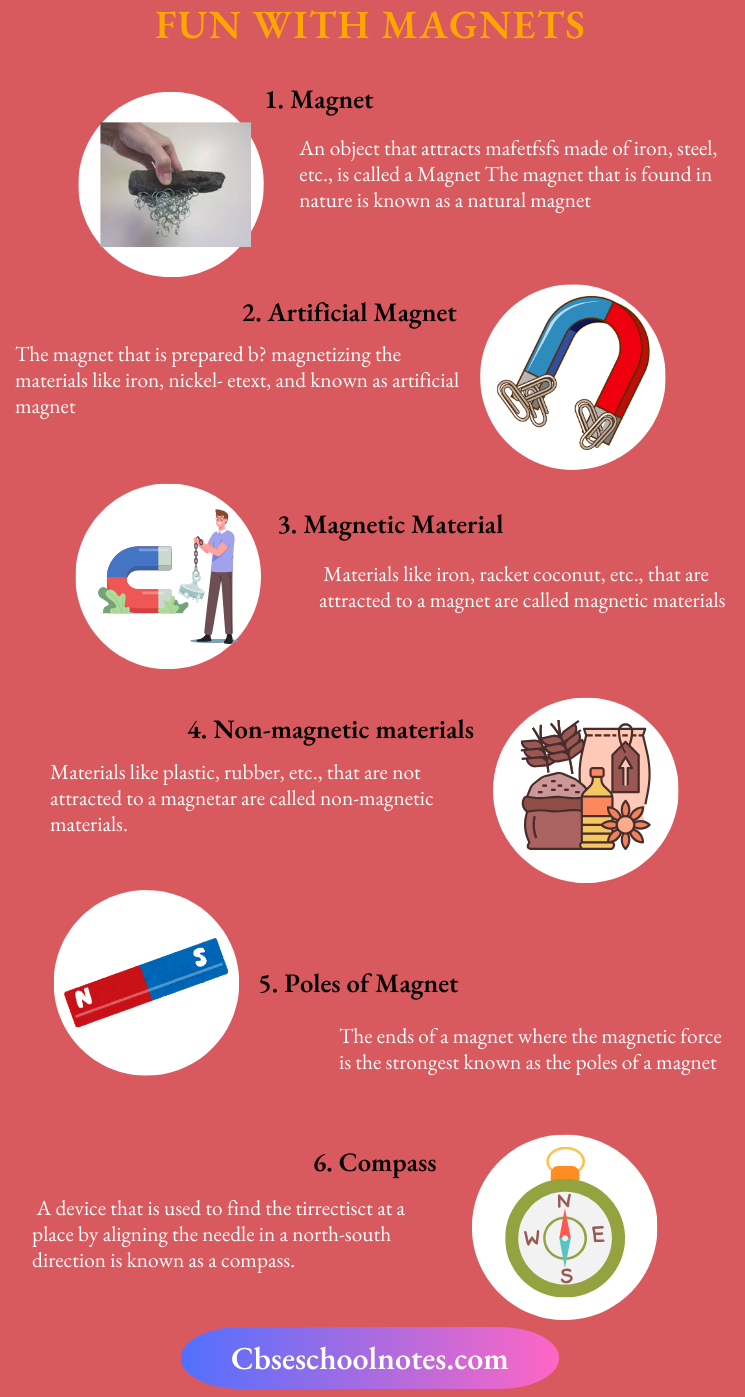
Fun With Magnets Magnet
The substances having the property of attracting iron are known as magnets. In our daily life observations, we have often seen certain stickers on the doors of refrigerators. The white iron boards in schools often have dusters that can be stuck to them. A pin holder has lots of pins stuck to it and a crane picking up pieces of iron from waste, etc All these objects have a special substance called a magnet in them. Nowadays, magnets are used to make mobile devices, telephones, televisions, etc
Picking up pieces of Iron from waste:
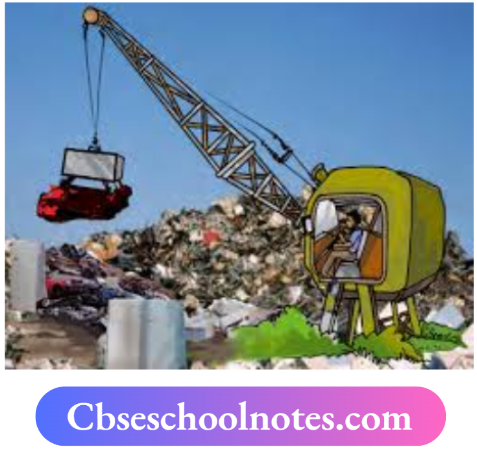
Some common Items that have magnets Inside them:

Discovery of Magnet
- The magnet was discovered accidentally. There was a shepherd named Magnes who lived in ancient Greece. He used to take his herd of sheep and goats to the nearby mountains for grazing. He would take a stick with him to control his herd. The stick had a small piece of iron attached at one end.
- One day, he was surprised to observe that he had to pull hard to free his stick from a rock where he used to go with his sheep and goats. It seemed as if the stick was being attracted by the rock
- The rock was a natural magnet that attracted the iron tip of his stick. So, after the name of a shepherd, the rock was named as magnetite and magnetite contains iron.
- Some people believe that magnetite was first discovered at a place called Magnesia
Read and Learn More Class 6 Science Notes
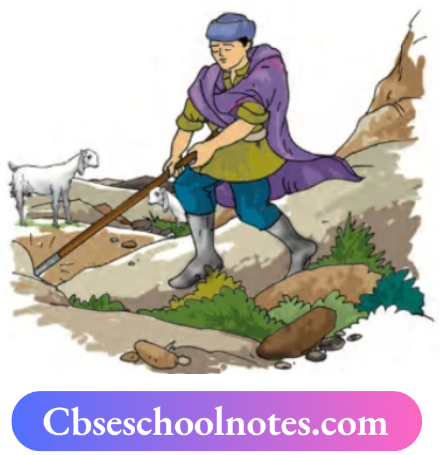
Natural Magnet and Artificial Magnet
- The magnet that is found in nature is known as natural magnet,
- Example: Magnetite and lodestone, whereas the magnet that can be made by magnetising materials like iron, cobalt, nickel, etc., is known as an artificial magnet or man-made magnet.
- Nowadays, artificial magnets are prepared in different shapes, e.g. bar magnet, horse-shoe magnet, cylindrical or ball-ended magnet
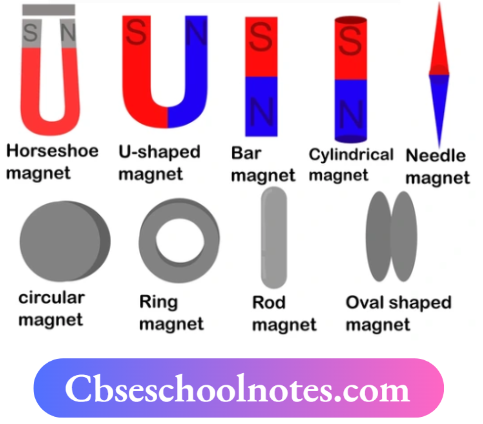
Magnetic and Non-Magnetic Materials
- All the materials are not attracted by magnets. Magnets attract only certain materials. The substances which get attracted by the magnet are called magnetic materials,
- Examples: Iron, steel, nickel, and cobalt.
- While those substances which are not attracted by the magnet are called non-magnetic materials,
- Examples: Rubber, plastic, stainless steel, feather, and leather.
- We can see this in daily life observation,
- Example: When a needle slips from our hand on the floor. To find it, a magnet. Since a needle is made of iron, it can be attracted by a magnet
Note: Non-magnetic materials cannot be magnetised. It means that non-magnetic materials cannot be converted into magnet
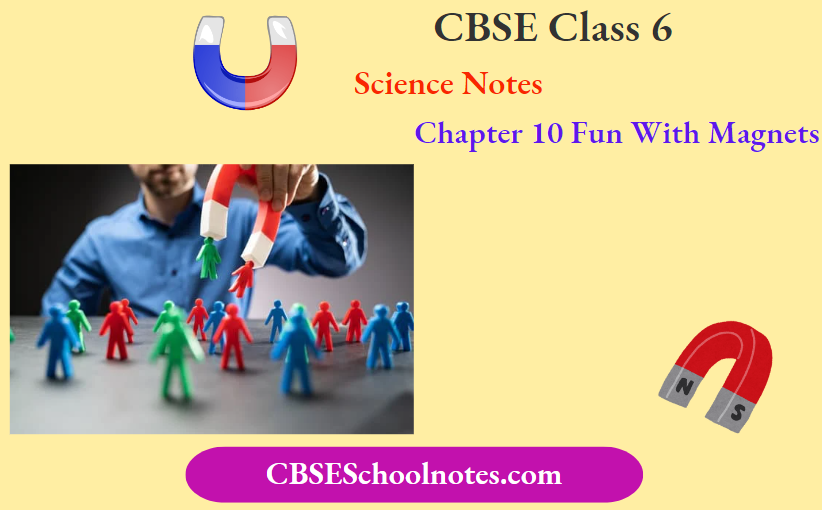
Poles of Magnet
- When we bring a magnet close to iron filings, we see that iron filings get attracted toward a magnet. If we observe, we will find that most of the iron filings stick at the two free ends of a magnet. These free ends are called the poles of a magnet. Poles of the magnet are the regions of strongest magnetism.
- All magnets have two poles north pole and south pole, whatever their shape may be. Usually, north (N) and south (S) poles are marked on the magnets.
- The north pole and south pole of a magnet can’t exist independently or cannot be separated. If a magnet is broken into two or more pieces, each of them will have a north pole and south pole

Finding Direction
- An interesting property of a magnet is that a freely suspended bar magnet always comes to rest in a north-south direction.
- The end ofthe magnet that points towards the north is called the north-seeking end or north pole of the magnet and the other end that points towards the south is called south seeking end or south pole of the magnet
- In early centuries, t is property of magnets was very useful for travelers. They used to suspend magnets with a thread to find directions.
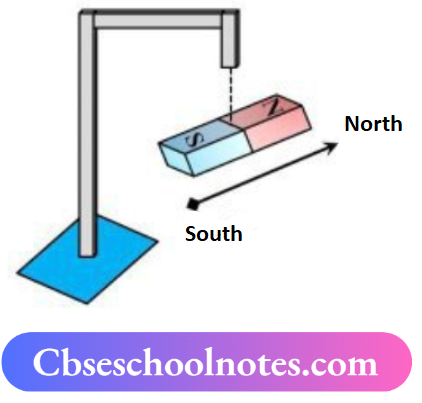
Using the Sun for Finding Directions
- By using the direction of the rising sun in the morning, we can find out the rough direction towards the east. If we stand facing east, then our left will be north.
- It may not be very exact but it will help to make out all the directions as
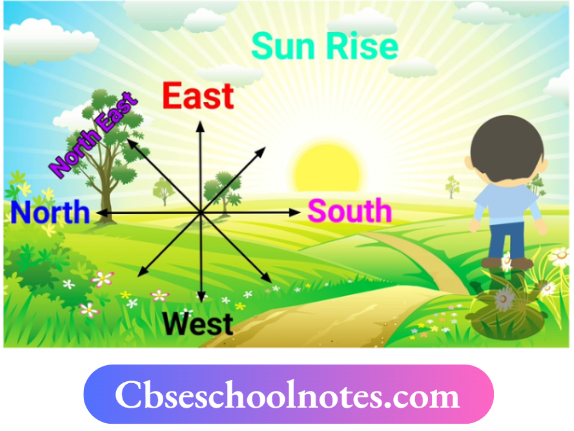
Compass
A compass is usually a small box with a glass cover on it. A magnetised needle is pivoted inside the box, which can rotate freely. It has a dial with directions marked on it as shown in the figure

Science Insight:
Earth also behaves like a giant magnet. The magnetic compass lines up with the earth’s magnetic poles such that the north pole of the magnetic needle always points to the earth’s north pole and vice-versa.
To find the directions using a compass
The compass is placed at a place where we wish to know the direction. The compass needle points in the north-south direction, when it comes to rest. The dial of the compass is rotated and aligned with the north-south axis of the needle. This gives the north-south direction.
Make Your Magnet
There are several ways to make a magnet from a magnetic material. One of the simplest ways to make a magnet is given below.
- First of all, take an iron bar, which is to be made of a magnet, and keep it on the wooden table.
- Now, take a bar magnet and try to hold it with one end with your hand.
- Keep the other end in touch with the one end of the bar.
- Now, move the magnet toward the other end of the iron bar.
- Now, lift the magnet at the end and place it at the end from where you have started.
- Repeat this process about 30-40 times.
- Bring a pin or some iron filings near the iron bar to check whether it has become a magnet. If not continue the process for some more time.
- Remember that the pole of the magnet and the directions of its movement should not change.
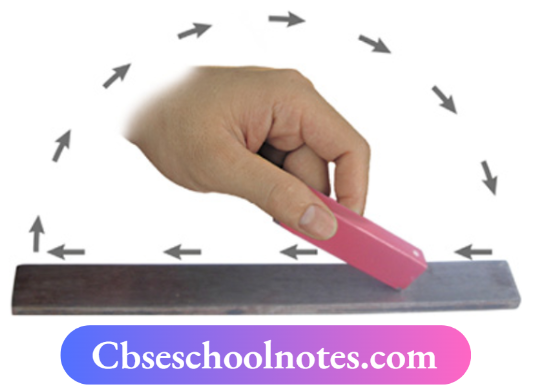
Attraction And Repulsion Between Magnets
- When north-north or south-south poles of two magnets come close, then they repel each other, i.e., it can be stated that like poles repel each other
- On the other hand, when the north-south or south-north poles of two magnets come closer, then they attract each other, i.e. it can be stated that unlike poles attract each other.
- The attractive or repulsive force that is exerted between the poles of a magnet is also known as a magnetic force.
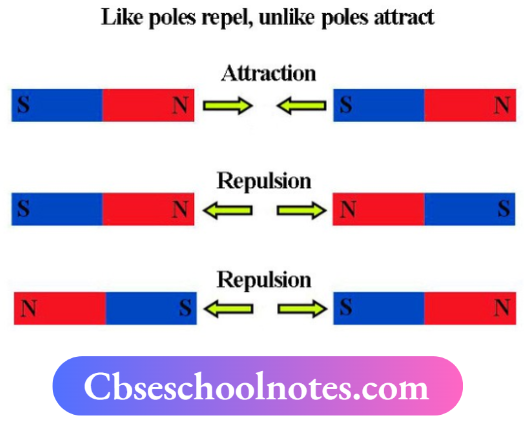
Science Insight:
Maglev train works on the principle of attraction and repulsion between magnets. In this, one set of magnets is used to repel and push the train up off the track and another set is used to move the elevated train ahead
A Few Cautions for Magnet
There are some ways to keep magnets safe
- Magnets lose their properties if they are heated, hammered, or dropped from some height.
- Magnets also become weak, if they are not stored properly.
- To keep them safe, bar magnets should be kept in pairs with their unlike poles on the same side.
- Keep magnets away from cassettes, mobiles, television, music systems, CDs, and computers.
- They must be separated by a piece of wood while two pieces of soft iron should be placed across their ends.

Activity 1
Aim: To observe the effect of a magnet.
Material Required: A magnet, a paper cover, a cup, a thread stand, and a metal clip
Procedure:
- Take a paper cup and fix it on a stand with the help of a clamp
- Place a magnet inside the cup and cover it with paper, so that the magnet is not visible.
- Attach a thread to a clip made of iron and fix the other end ofthe thread at the base ofthe stand
(remember to keep the length of the thread sufficiently short). - Bring the clip near the base of the cup. The clip will rise in the air without support

Conclusion: We have concluded that a magnet is a substance that has the property to attract iron.
Activity 2
Aim:
To identify magnetic and non-magnetic materials using a magnet
Material Required:
A magnet, different types of materials Material Required A magnet, different types of materials
Procedure:
- Hold a magnet and bring it close to each one of these materials.
- Observe which materials get attracted towards the magnet.
- Prepare a table of those materials that are attracted by a magnet.
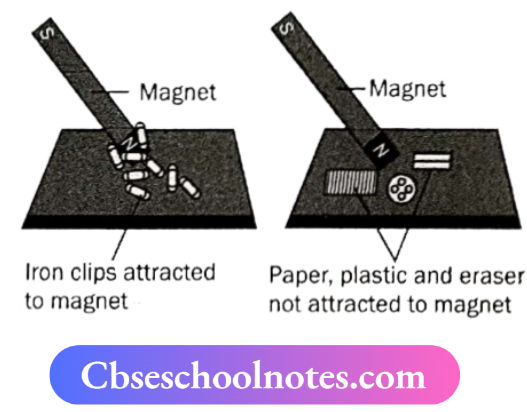

Conclusion:
We have concluded that objects which are made of iron, copper, etc. (magnetic materials), are attracted by magnets. On the other hand, objects which are made of plastic, paper, cloth, etc. (non-magnetic materials), are not attracted by a magnet
Activity 3
Aim: To identify the amount of iron particles in the soil of different areas
Material Required: A magnet, samples of the soil from a different area
Procedure:
- Rub a magnet In the sand or soil. You will observe some particles of soil stick to the magnet.
- Gently shake the magnet to remove the particles of soil.
- You will observe some particles still stick to It. These might be small iron pieces.
Prepare a table for different samples of soil:
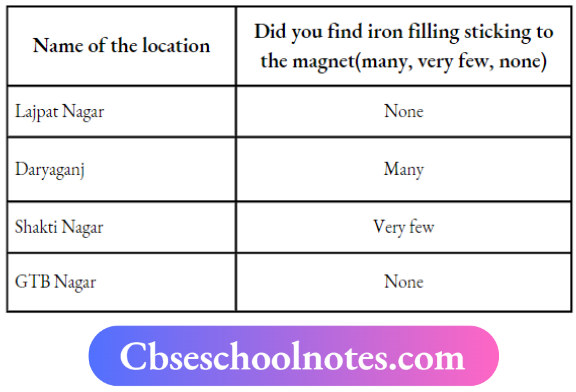
Conclusion: We have concluded that different areas have different amounts of iron particles in their soil
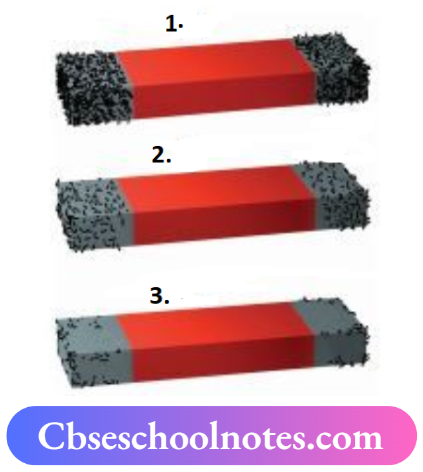
Activity 4
Aim: To observe that the magnetic strength is maximum at the poles.
Material Required: A magnet, and some iron filings.
Procedure:
- Take some iron filings on a paper sheet.
- Put a magnet on the sheet and smoothly roll it on the iron filings
- Wait for a few seconds, we will find that the maximum number of iron filings are attracted at the end of get and a very smaller amount at the center
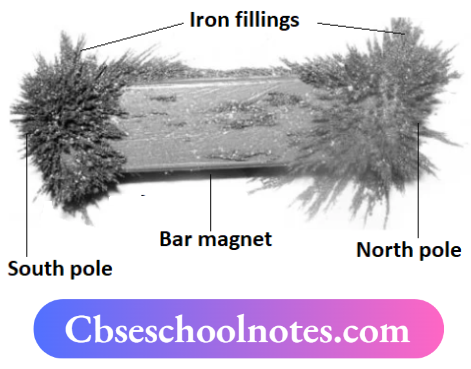
Conclusion: We have concluded that the magnetic strength of the magnet is maximum at the poles.
Activity 5
Aim:
To show the directive property of a magnet. Material Required A magnet, a wooden stand, and a thread.
Procedure:
- Hang the magnet with the thread freely in the air. When it comes to rest, mark two points on the ground to show the position of the ends of the magnet.
- Rotate the magnet by gently pushing one end in any direction and when it comes to rest, mark the position of the ends of a magnet.
- Repeat the above step, and the magnet always comes to rest in the same direction, i.e. north-south direction.
- Repeat this activity with an iron bar, a plastic, or a wooden scale. You will find that the observation is different for every step.
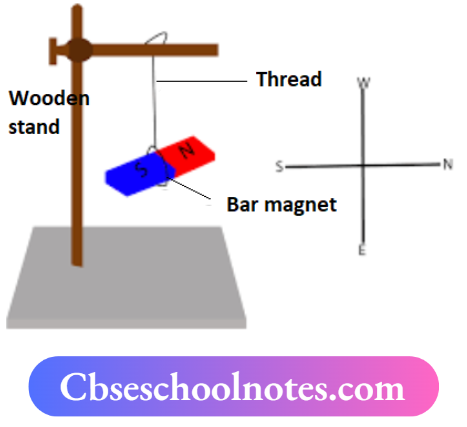
Conclusion:
We have concluded that a magnet has directive properties. It is always directed to the north-south direction
Activity 6
Aim: To make a simple magnetic compass. Do opposite poles attract each other?
Material Required: A cork, a magnetised needle, and a water bowl.
Procedure:
- Insert the magnetised needle through a small piece of cork.
- Let the cork float in water in a bowl. Make sure that the needle does not touch the water.
- Note the direction in which the needle points.
- Rotate the cork, with the needle fixed in it in different directions.
- Note the direction again in which the needle points.
- You will find that the needle always points in the same direction.

Conclusion:
We have concluded that magnetized needle always comes at rest in the north-south direction of the earth.
Activity 7
Aim: To observe attraction and repulsion between magnets.
Material Required: Magnets, toy cars.
Procedure:
- Take two small toy cars and label them A and B.
- Place a bar magnet on top ofeach car along its length and fix them with rubber bands such that, in car A, the south pole of the magnet is towards its front, and in car B, die north pole of the magnet is towards its front.
- Place both cars close to one another. You will find that the cars are moving towards each other.
- Now, place the cars close to each other such that the rear side of car A faces the front side of car B. You will find the cars are moving away from each other.
- Repeat this activity by changing the position of the car and observing it.
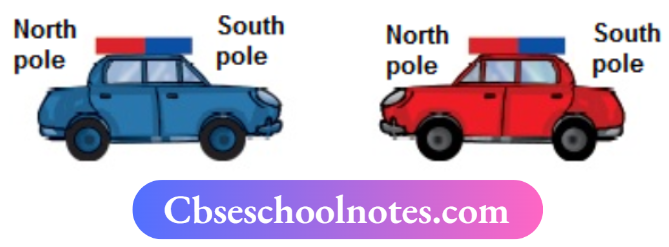
Positions of the car:
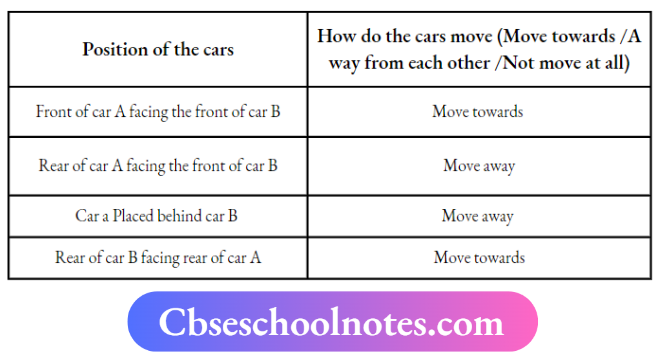
Conclusion:
We have concluded that like poles repel each other and unlike poles attract each other.
